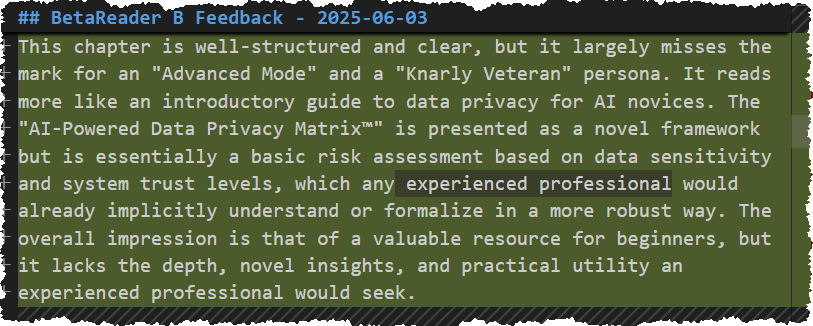How to Think About AI: Agents, Abstraction and Orchestration Explained
Many people think about AI like it’s a super-powered employee who can do anything if you just ask nicely enough.
So they pile task after task onto one AI tool.
Then wonder why results are inconsistent
There’s a better way to think about this. Instead of one AI doing everything poorly, you can build teams of AI specialists working together.
This approach has three key concepts:
➡️ agents (the specialists),
➡️abstraction (hiding complexity), and
➡️orchestration (managing the team).
This is about changing how you think about AI workflows. Once you understand this framework, you’ll see opportunities everywhere to work smarter instead of harder.
- How to simplify complex tasks with AI abstraction
- Why AI agents work better as specialists
- Managing AI workflows through orchestration
Hiding the “Mess” Behind Simple Commands
Abstraction means hiding complex steps behind simple actions. When you make tea, you don’t pick and dry tea leaves, and build a kettle. You fill the kettle, press a button, drop a tea bag in a cup, and wait. The kettle handles all the work – heating elements and thermostat switches off while you doomscroll instagram for the third time this morning.
AI workflows work the same way. You give a high-level goal like “update this report.” The system breaks that into smaller steps without bothering you with details.
This is important because you stay focused on what you need, not how it happens. You move faster when you’re not buried in steps.
AI Agents Are Specialists, Not Generalists
I call these AI helpers agents. Each one does one job well. Instead of asking one AI to do everything poorly, you create several agents that excel at specific tasks.
Here’s what this looks like:
- Fact-Checker Agent reviews dates and figures
- Style-Editor Agent matches your brand voice
- Research Agent finds current market data
Each agent has a clear job. You get better accuracy. You can run multiple agents at the same time instead of waiting for one to finish.
Orchestration Is Just Project Management for AI
Orchestration sounds technical. It’s not. It’s project management for your AI helpers.
You set the big goal: “Update our product brochure for 2025.” Your system sends each part to the right agent:
- Research Agent finds competitor pricing
- Fact-Checker Agent confirms your specs are current
- Style-Editor Agent polishes the text
The system returns everything in one place. You review and decide what stays.
Here’s an example of my AI “Beta Reader” reading through chapters of my book “The Absolute Beginner’s Guide to Using AI” (which covers less advanced topics than this blog post!).
The beta reader is reading through each chapter one at a time, directed to each one by the orchestrator (project manager) who is keeping track of what chapter we’re on. They’re working together to make a document that contains feedback on every chapter from the perspective of my virtual beta reader. Have a look (you can pause and read what the feedback says):
You’re not juggling the separate tools manually. You stay in charge of the plan while the system handles the steps.
Applying This Thinking Requires Some Technical Skills (and Coffee)
Understanding this framework is one thing. Actually building these systems today requires basic technical skills.
I built my workflow in Visual Studio Code using Roo code. That’s more technical than opening a browser and typing a prompt. You need to install a code editor and copy some scripts.
If you’re comfortable with basic setup tasks, you can do this. If you want purely no-code options, they exist (I’ll cover those in another post). A little technical effort unlocks major productivity gains.
Keep Your Layers Simple
Anthropic warns about building complex systems:
“Frameworks make it easy to get started by simplifying low-level tasks, but they can create extra layers that hide your prompts and responses. That makes it harder to debug, and tempts you to add complexity when a simpler setup would do just fine.”
Translation: fancy tools that promise “click-and-go” can hide what’s actually happening. When something breaks, you can’t fix it.
Keep things simple instead:
- Talk to AI directly first: Ask for what you want in a clear prompt. See exactly what you send and get back.
- Find patterns you repeat: When you give the same instructions multiple times, save them as templates.
- Add management only when needed: If you run the same three agents in sequence repeatedly, use a simple checklist to track progress.
This is important because simple systems break less. You spend time on results, not fixing hidden problems.
Real Example: I Updated My Book in Days, Not Months
I recently updated “An Absolute Beginner’s Guide to Using AI.” My goals:
- Add fresh content and increase word count
- Replace outdated tools with current options
- Meet a tight printing deadline
Instead of coordinating human editors and beta readers (which takes weeks), I built a simple AI system:
- Project Manager Agent divided work and tracked progress
- Developmental Editor Agent suggested which sections needed changes
- Fact-Checker Agent verified every statistic and tool name
- Three Beta-Reader Agents flagged confusing passages
Here’s how it worked:
- I gave the existing draft to the Project Manager Agent
- It sent each chapter to the Developmental Editor Agent for improvement suggestions
- The Fact-Checker Agent reviewed technical details simultaneously
- Beta-Reader Agents returned feedback on clarity—in minutes, not weeks
- The Project Manager Agent compiled all feedback with priority rankings
- I reviewed, approved changes, and gave final approval
Result: Everything that normally takes months happened in days. I focused on decisions while AI agents handled execution.
How to Start Applying This Framework
Now that you understand the three concepts, here’s how to apply this thinking to your own work.
Pick one routine task: Choose something you do regularly. Maybe you summarise weekly sales reports or gather client feedback. Ask: “Will I do this again next month?” If yes, it’s a candidate.
Talk to AI directly: Open your AI tool. Write clear instructions:
“Summarise this sales report, focusing on last month’s growth and the top three product trends.”
Test it. If the output isn’t right, adjust until it works.
Save a template: Copy your working prompt into a document. Replace specifics with placeholders:
“Summarise this [type of document], focusing on [desired insights].”
Next time, swap in the details.
Map your workflow: Break down the task. Updating a newsletter might involve:
- Gathering new data
- Summarising findings
- Polishing language
Create a checklist:
- Ask Research Agent for updated statistics
- Use Summary Template to condense findings
- Send draft to Style-Editor Agent for tone
- Review and approve final draft
Test and refine: Run through it once. Note where things get messy or slow. Maybe research returns irrelevant data, or summaries miss key points. Adjust your instructions.
Scale when it’s worth it: If you repeat this weekly, add a simple tracking system. A shared document or spreadsheet can track who does what and when. Only add structure if it clearly saves time.
Avoid These Common Mistakes
Too many tiny tasks: Dozens of micro-agents look organised but waste time. Start with two or three agents. Combine tasks if needed.
Hidden workflows: If colleagues can’t understand how you produced something, your system is too complex. Keep a brief log of each agent’s role and instructions.
Building for one-off jobs: Don’t spend hours setting up a system you’ll only use once. Ask: “Will I repeat this at least three times?” If not, use simple prompts instead.
Outdated prompts: AI models change constantly. Prompts that worked three months ago might suddenly fail. Review your templates quarterly.
Skipping human review: AI agents are powerful but not perfect. Always include human checks, especially for critical decisions or public content.
The Thinking Shift That Changes Everything
Agents, abstraction and orchestration aren’t just technical concepts. They’re a new way to think about AI workflows. Instead of asking “How can I get this AI to do more?” ask “How can I build a team of specialists that work together?”
This thinking shift matters because it moves you from fighting with one overloaded AI to managing a system that actually works.
Apply this framework:
- Identify one routine task you handle regularly
- Break it into specialist roles (your agents)
- Hide complexity behind simple commands (your abstraction)
- Create a simple management process (your orchestration)
- Test the thinking, then build the system
Once you start thinking in agents, abstraction and orchestration, you’ll see opportunities everywhere. The goal isn’t just working faster—it’s working with a completely different mental model.
Start with the thinking. The implementation will follow.





